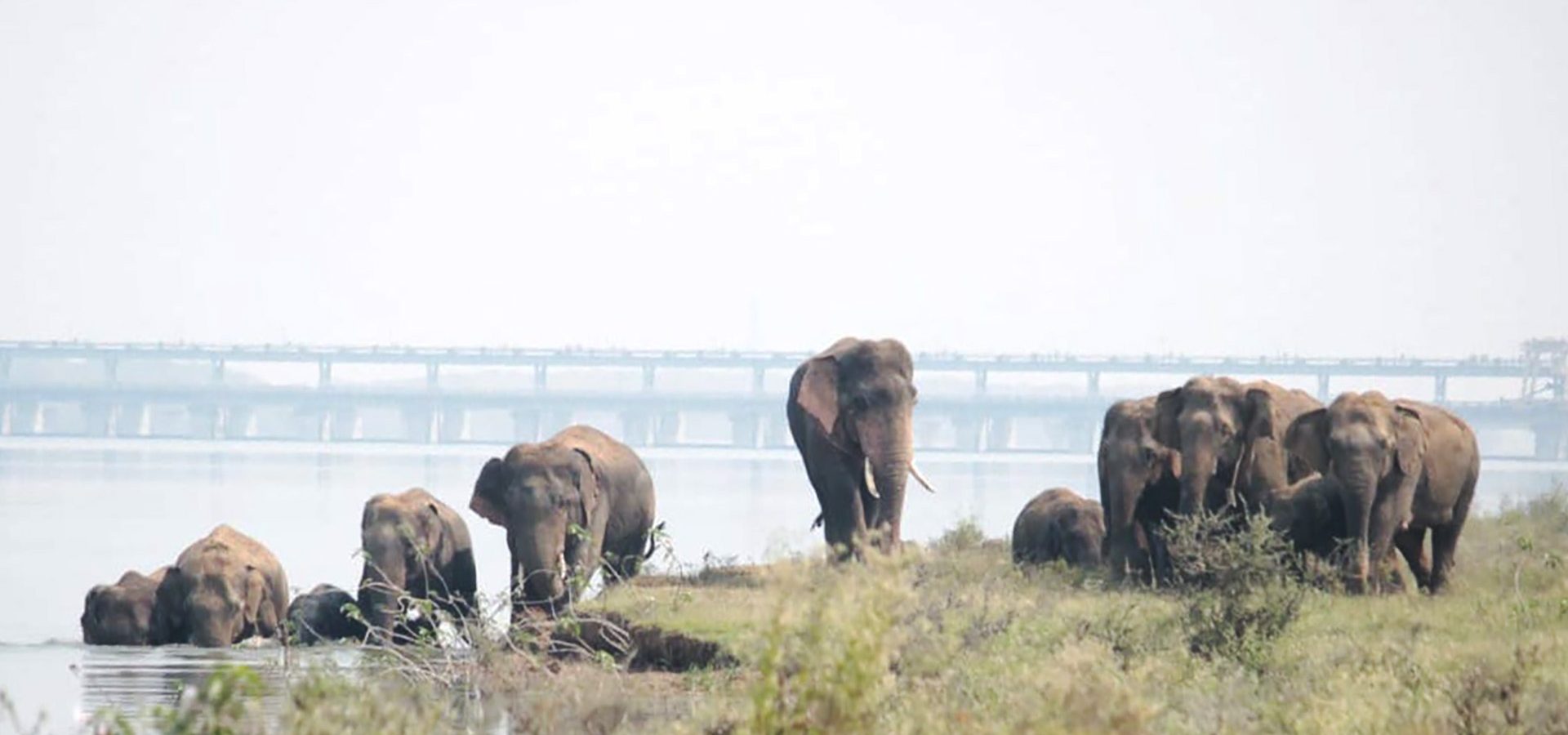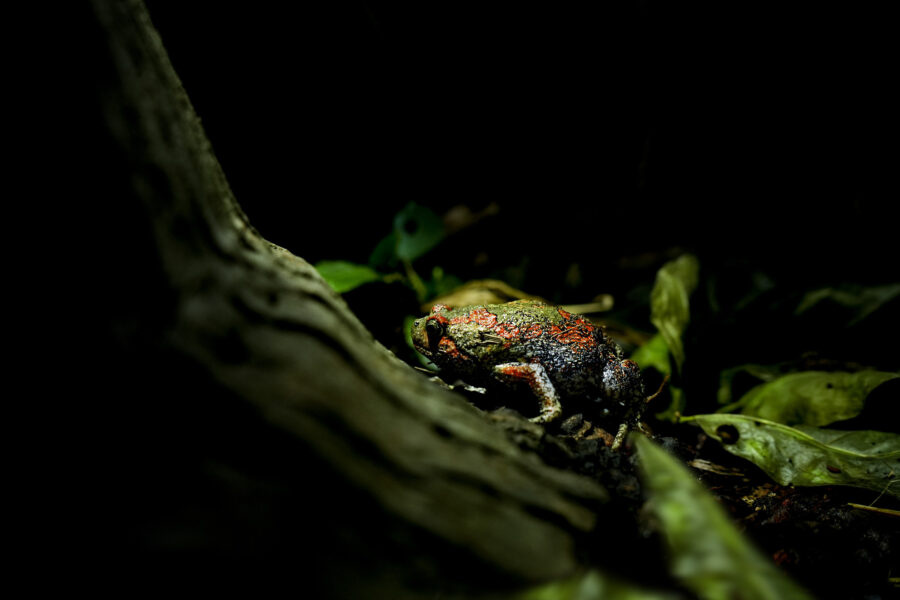The unflappable demeanor, infectious laughter, and optimistic spirit of Mr. Swaminathan Shamugavelu belie the arduous tasks he tackles every day as a wildlife biologist at Wildlife SOS. Mr. Swaminathan has ventured into the dense forests of Chhattisgarh to radio collar a wild elephant, traversed rocky terrains to study sloth bears, and labored under the scorching sun to restore a habitat at Ramdurga – all with a smile on his face. Having joined Wildlife SOS in 2014, Mr. Swaminathan is a force to be reckoned with. An expert in data analysis, surveying, and research development and a member of the IUCN Sloth Bear Expert team, – Mr. Swaminathan has dedicated his life to conserving the wildlife of India.
Today, we celebrate Mr. Swaminathan as staff of the month. Through a candid conversation, we delve into his world – a world dedicated to our four-legged friends!
- What got you interested in wildlife, specifically what got you interested in becoming a wildlife biologist?
I grew up in a coastal area in Porayar, Mayiladuthurai District of Tamil Nadu. During my childhood I would spend plenty of time next to the water, observing the diverse marine life that thrived amidst us. I remember watching a watersnake swim effortlessly in the waters and I was fascinated!
My personal interest only grew when I was in college. My university started the first and best course on wildlife biology and I knew I had to enroll. Since then I have not looked back!
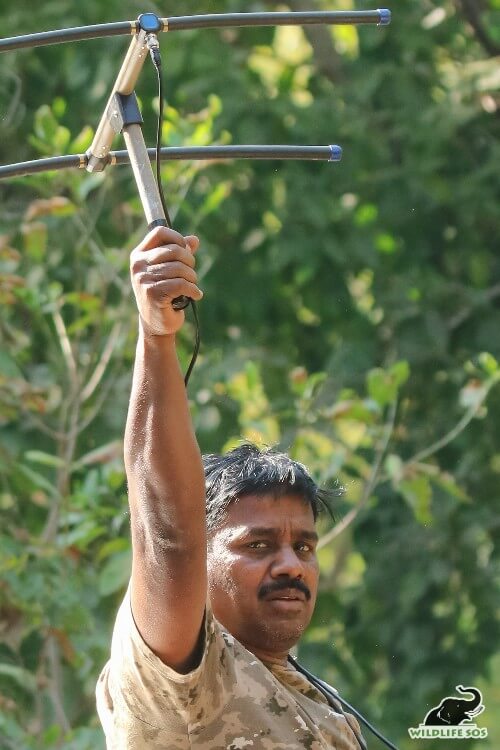
- How did you get involved with Wildlife SOS? And how has your journey been with Wildlife SOS thus far?
While working with my previous organization, I got to meet Dr. S. Ilayaraja the current Director of Veterinary Services at Wildlife SOS, and Dr. Arun A. Sha, Director of Research and Veterinary Sciences at Wildlife SOS. My encounters with them led me to learn about the work Wildlife SOS was doing. One day, Dr. Arun was kind enough to show me around the Bannerghatta Bear Rescue Centre and I was mesmerized by the sloth bears.
Previously, I had only worked with elephants and tigers so I knew little about sloth bears. Yet, I was ambitious to know more about them as sloth bears were often encountered in the locality where I grew up. After I saw the rescued sloth bears I knew I had to work with Wildlife SOS. I wanted to get data, apply different methodologies, and essentially do something for these bears.
Working with wildlife SOS thus far has been a great experience. Here, I get to work with animals as small as a lizard to as big as an elephant!
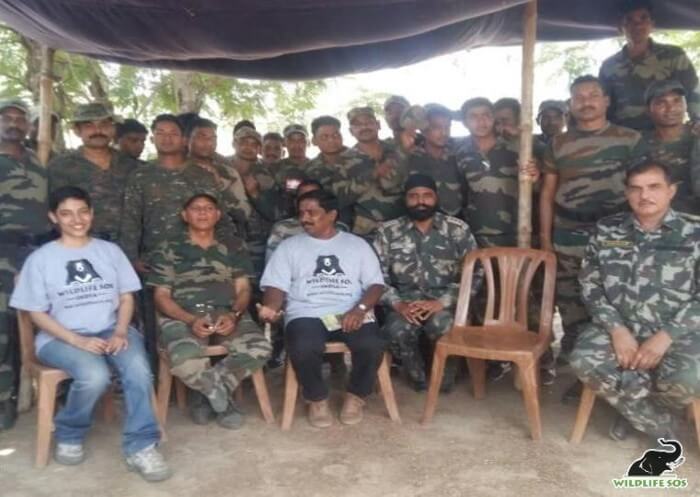
- What does a typical day look like for you?
Some people might find my typical workday rather boring! I spend hours sitting behind a computer and analyzing the various data collected! No matter how tiring, this data is integral to conserving wildlife and will be integral for future generations.
- What are some projects you have been involved in? Which one is closest to your heart?
I have worked on an array of projects with Wildlife SOS. Some include the habitat restoration project at Ramdurga, Sloth bear denning project, Sloth bear- Human conflict mitigation in Karnataka, Star Tortoise Repatriation project, and Chhattisgarh Elephant radio-collaring!
Since my career started with Elephants, any project involving elephants will always be my favorite. The Chhattisgarh Wild Elephant Project was specifically a huge moment of pride for me. The Wildlife SOS team managed to radio collar the matriarch of an elephant herd – a task that is close to impossible! Moreover, the radio-collaring was completed in just 4 months! During this project, we also got to work with notable individuals such as Elephant Man of India – Ajay Desai.
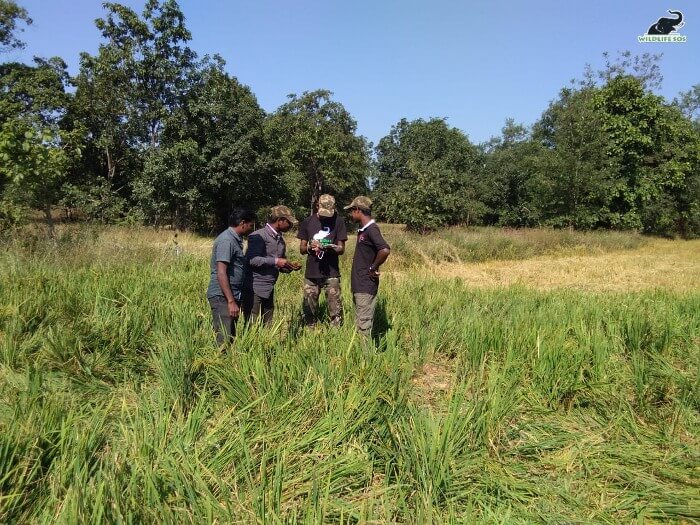
- I know you worked a lot with sloth bears, what is one thing you learned about these bears?
I have been lucky to gather integral data on sloth bears who are one of the least researched bears in India. Sloth bears are solitary and territorial animals. In the Koppal District of Karnataka, hillocks act as small habitats for sloth bears. Once, we put a camera trap on a hillock and the information we gathered was revolutionary! One hill with a camera trap gave me 22 different angles that showed behaviors of sloth bears that we had never observed before. Thus, every day I get to learn something new about these bears.
- What would you say is the biggest challenge you face in your job?
When you are working with animals the biggest challenge is approaching the animal. One has to have tremendous respect and knowledge of the animal. One must maneuver themselves in a way that no animal ever feels threatened by you.
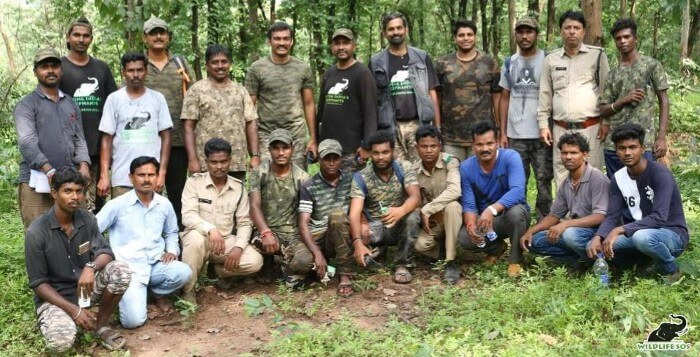
- Who is your conservation role model and how does the person inspire you?
My conservation role model is the Elephant Man of India – Ajay Desai. I call him my ‘guru’! He taught me everything I know. I believe him to be one of the top scientists that India ever had. I would also consider Dr. RK Singh – retired PCCF Chhattisgarh to be one of my role models. The knowledge Dr. RK Singh has is priceless and he is always willing to teach others.
- What are your future plans, hopes, and dreams for working with India’s wildlife?
In the future, I want to invest in conflict mitigation strategies specifically in Chhattisgarh. In this state, elephants have migrated from Orissa and have created a newly established range. These animals are doing everything they can to survive in a rapidly urbanizing world and I want to figure out how I can make their quest for survival easier.
The plight of elephants In South India is similar as well. I have been collecting data on elephants for the past 15 years in this region and hope to collate all of this information.
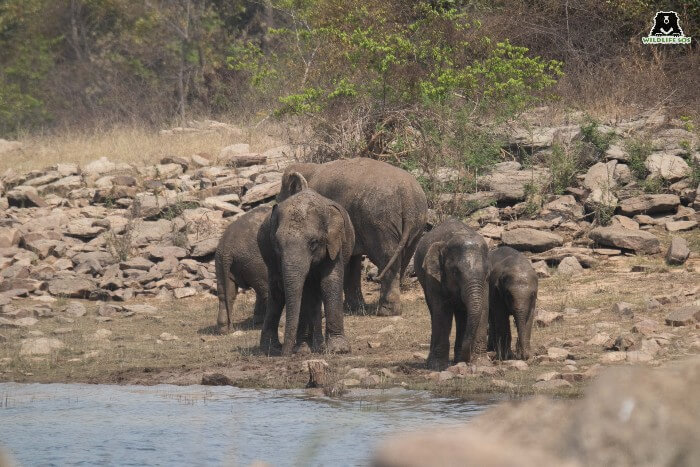
- What do you think others can do to help wildlife?
I think the most important thing others can do to help wildlife is to raise awareness. Recently, I was talking with a visitor at Banneghata Bear Rescue Centre and he was extremely enthusiastic to spread the word about the work we do and the plight of sloth bears! I was grateful for his enthusiasm as education and awareness can go a long way
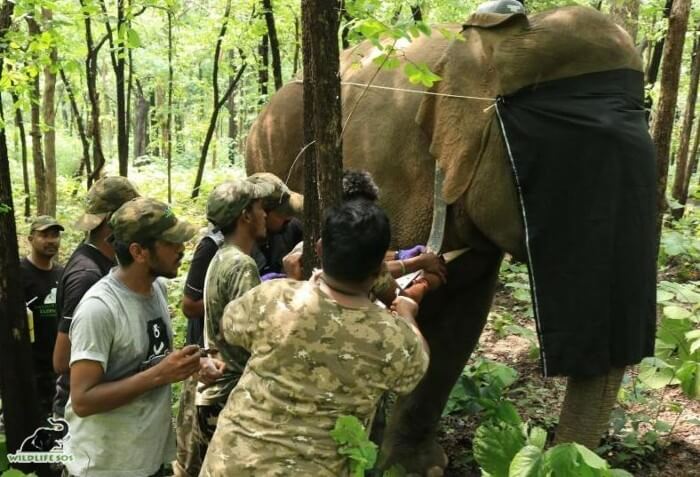
- Any fascinating stories you would like to leave us with?
There is one particular story I recount all the time. I had gone for a survey to a village where sloth bear attacks were becoming increasingly common. I interviewed families of victims and everyone who had been impacted. Every house had its own grievances and various anecdotes about how they had been terrorized by sloth bears. One particular person took me to a temple located at the top of a hillock where sloth bears were commonly spotted. As we reached the temple, he told me a story that had happened many years ago. According to this local lore, prior to the Wildlife (Protection) Act of 1972, a shooter had been hired to kill a sloth bear terrorizing the village. One day the shooter finally got a good aim at the sloth bear. The only problem was that the bear was inside the temple. Villagers claim that the bear had situated itself in front of the idol of god, his posture was as if he was begging for forgiveness, asking the shooter not to fire! The villagers yelled, pleading with the shooter to let the sloth bear go. Yet, shots were fired and the bear was killed. Today, numerous villagers believe that the attacks are a consequence of this incident, a sort of curse put upon the village.
As a scientist, every part of me wanted to explain that this was not true. I wanted to tell them that sloth bears were commonly coming to the temple because of improperly disposed garbage and leftover food items offered to god! Yet, at that moment I restrained myself, knowing well that the beliefs of communities need to be respected.
In India that is a peculiar thing – even in the field of wildlife conservation, science and methodologies always have to co-exist with beliefs. There is a lot to take away from such a story!

